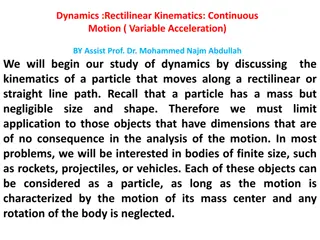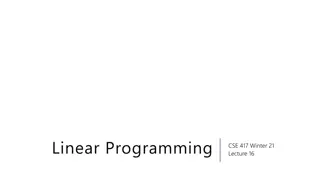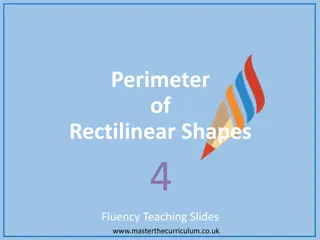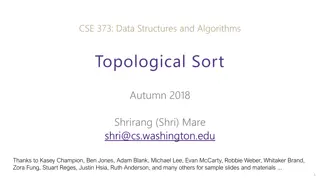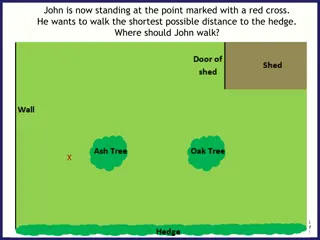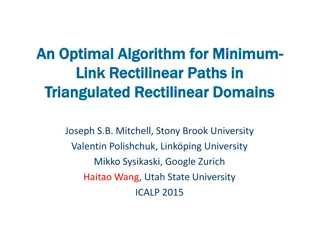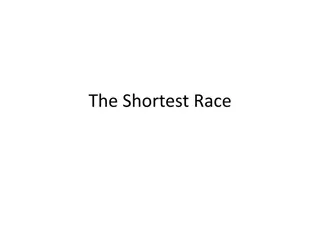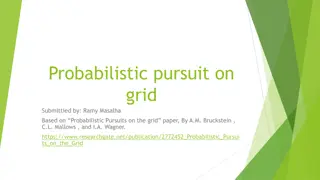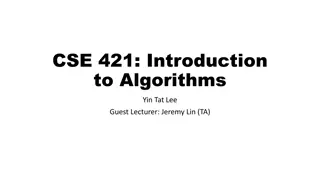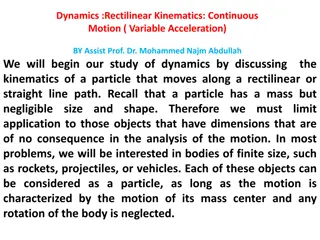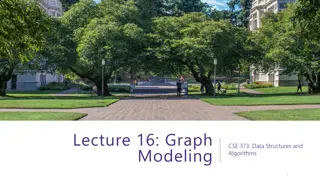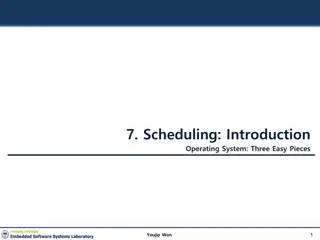Bicriteria Shortest Paths among Rectilinear Obstacles
This research focuses on finding minimum-link and shortest rectilinear paths among obstacles in a plane, exploring the challenges and solutions involved in such pathfinding problems within rectilinear domains and holes. Different types of bicriteria paths are analyzed, along with previous work in the field.
Download Presentation

Please find below an Image/Link to download the presentation.
The content on the website is provided AS IS for your information and personal use only. It may not be sold, licensed, or shared on other websites without obtaining consent from the author.If you encounter any issues during the download, it is possible that the publisher has removed the file from their server.
You are allowed to download the files provided on this website for personal or commercial use, subject to the condition that they are used lawfully. All files are the property of their respective owners.
The content on the website is provided AS IS for your information and personal use only. It may not be sold, licensed, or shared on other websites without obtaining consent from the author.
E N D
Presentation Transcript
Bicriteria Bicriteria Rectilinear Rectilinear Shortest Paths among Shortest Paths among Rectilinear Rectilinear Obstacles in Obstacles in the Plane the Plane Haitao Wang Utah State University SoCG 2017, Brisbane, Australia
The The rectilinear rectilinear minimum minimum- -link link path problem path problem Input: a rectilinear domain P of n vertices and h holes, and two points s and t Output: a rectilinear minimum-link s-t path t s
The The rectilinear rectilinear shortest shortest path problem path problem Input: a rectilinear domain P of n vertices and h holes, and two points s and t Output: a rectilinear shortest s-t path t s
Bicriteria Bicriteria: : a a shortest shortest minimum minimum- -link path link path The shortest path among all minimum-link paths t s
Bicriteria Bicriteria: : a a minimum minimum- -link link shortest path shortest path The minimum-link path among all shortest paths t s
Question: Does there always exists a path that is both a shortest Question: Does there always exists a path that is both a shortest min min- -link path and a min link path and a min- -link shortest path? link shortest path? Simple rectilinear polygons (no holes): Yes! With holes: No! s t
Three types of Three types of bicriteria bicriteria paths paths Min-link shortest paths Shortest min-link paths Minimum-cost paths The cost of a path: a non-decreasing function of both the length and the number of edges of the path One-point queries s is given in the input, and t is a query point Two-point queries Both s and t are query points
Previous work: for all three types of Previous work: for all three types of bicriteria bicriteria paths paths Finding a single path O(n2) time, Yang et al., 1992 O(n log2n) time and O(n log n) space, Yang et al., 1995 O(n log1.5n) time and space, Yang et al., 1995 O(n log1.5n) time and O(n log n) space, Chen et al., 2001 One-point queries, Chen et al., 2001 Preprocessing: O(n log1.5n) time and O(n log n) space Query: O(log n) time Two-point queries, Chen et al., 2001 Preprocessing: O(n2 log2n) time and space Query: O(log2 n) time
A rectilinear domain of A rectilinear domain of n n vertices and vertices and h h holes holes h could be much smaller than n Complexities better measured by h instead of by n e.g., O(n2) vs. O(n + h2) n = 39 h = 3
Our results: Our results: Finding a single Finding a single path path O(n2) time, Yang et al., 1992 O(n log2n) time and O(n log n) space, Yang et al., 1995 O(n log1.5n) time and space, Yang et al., 1995 O(n log1.5n) time and O(n log n) space, Chen et al., 2001 Our results: Find an error in all the previous algorithms Correct the error: Min-link shortest paths: O(n log1.5n) and O(n log n) space Shortest min-link paths and min-cost paths: O(n2 log1.5n) and O(n2 log n) space Further improvement: Min-link shortest paths: O(n + h log1.5h) and O(n + h log h) space Shortest min-link paths and min-cost paths: O(n + h2 log1.5h) and O(n + h2 log h) space
Our Our results: Queries results: Queries
A path A path- -preserving graph, Clarkson et al. 87 preserving graph, Clarkson et al. 87 Cut-lines Steiner points V: the set of all vertices of P; G(V): the graph, O(n log n) nodes and edges t s
Observations on G(V) Observations on G(V) Why path-preserving ? A shortest s-t path in G(V) is a shortest s-t path in P, Clarkson et al. 87 For finding a bicriteria path: G(V) contains a target path from s to t, such that if we follow the path and apply a dragging operation on each edge, then we can obtain a bicriteria path, Yang et al. 96 t h f e d b c s a
The algorithm, Yang et al., 96 The algorithm, Yang et al., 96 Run Dijkstra s algorithm on G(v) from s and apply the dragging operation on each visited edge Maintain at most eight paths at each node For min-link shortest path: use the lexicographical vector (L( ), D( )) as the key for any path L( ): the length of D( ): the number of links of
The error The error L( 1) = L( 2), D( 1) = 4, D( 2) = 5 Yang et al: It is not necessary to maintain 2 at p since D( 1) < D( 2) Not correct!! 2 can lead to a better path to t Our correction: If the D values of two paths of the same type differ by one, then both may need to be maintained At most 16 paths need to be maintained at each node (for min-link shortest paths) O(n) paths for other two bicriteria paths t p 1 2 s
Further improvement Further improvement Goal: Make complexities depend only on h, in addition to O(n) E.g., O(n log1.5 n) O(n + h log1.5 h) The main tool of the previous algorithm is G(V) of size O(n log n) Our idea for improvement Use a smaller graph G(B) of size O(h log h) B: a set of O(h) backbone points G(B) is built w.r.t. B
The corridor structure of P The corridor structure of P The vertical decomposition of P, VD(P) Extend each vertical edge until the boundary of P
The corridor structure of The corridor structure of P P Consider the dual graph G of the VD(P) Keep removing the degree-one nodes from G Keep contracting the degree-two nodes
The corridor structure of The corridor structure of P P The remaining graph G is called corridor graph Each vertex of G defines a junction rectangle Each edge of G defines a corridor
The corridor structure of The corridor structure of P P Each corridor is a simple polygon, and has two doors connecting with its neighboring junction rectangles O(h) corridors
Defining backbone points on corridors Defining backbone points on corridors An open corridor has 4 backbone points, two on each door A closed corridor has 2 backbone points, one on each door backbone points d2 w2 d2 w1 d1 d1 open closed
The reduced path The reduced path- -preserving graph G(B) preserving graph G(B) G(B) is defined w.r.t. the set B of all backbone points (including s and t), in the same way as G(V) defined w.r.t. V In addition, each closed corridor defines a corridor edge in G(B) which is an edge connecting p and q, with weight equal to the length of a shortest p-to-q path in the corridor q Path-preserving: A shortest s-t path in G(B) is a shortest s-t path in P p
The algorithm The algorithm Run Dijkstra s algorithm on G(B) by performing dragging operations on ordinary edges of G(B) The key difference: For each corridor edge, perform a new type of operation: corridor-path generating operation The main challenge of our approach Need to implement it in O(log n) time q p Question: Can we simply connect p to q by an arbitrary bicriteria path in the corridor? NO!! s
The corridor The corridor- -path generating operations path generating operations a is to the left of p a is above p q q a a p p s s q q p p a a s s a is below p and is on the door a is below p but not on the door



